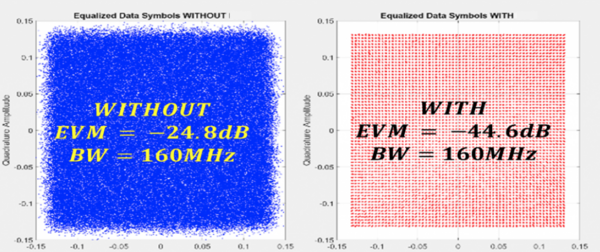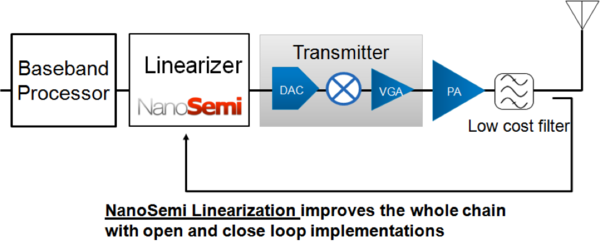The Key to Ultra-fast Wi-Fi
With each generation, Wi-Fi keeps getting faster. When will it be “fast enough?” Never! You’re talking to someone from Boston. Yeah, the Patriots won five Super Bowls, but Pittsburgh won six. We want more!
I’m not making my Super Bowl pick just yet, but when it comes to Wi-Fi, I can tell you definitively: faster is coming.
Much faster, with the emergence of
802.11ax, which by some accounts is the 6
th Generation of Wi-Fi (6G anyone?). Using more and wider channels, higher modulation techniques and other elements of the new standard, tomorrow’s Wi-Fi will be 4 to 10x faster than today’s 802.11ac networks, delivering up to 1.2 Gbps per stream.
Sounds great, right? Well, keep in mind that, for the moment, 802.11ax performance exists largely on paper and in the lab. Now, Wi-Fi device and chip vendors need to go out and make it happen in the real world. That means not just advertising huge throughput increases on a product box—but actually delivering them to clients at usable distances with good battery life. And doing that is a lot harder than it seems.
Why is it so tough to bring ultra-fast Wi-Fi bandwidths to real-world devices at longer range with better battery life? To answer these questions, I’m going to need to nerd out a little. Join me on a journey to the center of the silicon that lives inside your Wi-Fi devices. I’m going to explain a radio frequency (RF) concept called “linearization,” and show why it holds the key to tomorrow’s lightning-fast Wi-Fi.
Why are higher Wi-Fi bandwidths so hard to deliver?
It’s not hard to achieve fast data rates when clients are right next to an access point (AP). To deliver good performance at a distance, however, Wi-Fi RF signals need a few important attributes. They have to be high-powered (so they can reach farther), while also being power-efficient. (A great-performing client that dies after an hour of use isn’t particularly useful.)
Finally, the RF signal needs to be very clean. And that’s where it gets especially tricky, because every component in the chip that touches that signal (called the “RF signal chain”) can add noise, ultimately degrading performance.
Now, I’ve mentioned that Wi-Fi RF signals need amplification. Those power amplifiers (PAs) inside RF transmitters are a major source of distortion. This is where “linearity” comes in. Linearity is a measure of the PA’s ability to amplify all the parts of a signal equally. More linearity means a cleaner signal and better throughput at longer distances. So if noisy PAs (and noisy signal chains overall) reduce linearity, we need to do something about it.
New 802.11ax standards demand greater linearity.
Achieving good linearity is a complex problem to begin with, and it gets more complex at wider Wi-Fi bandwidths, especially over 40 to 60 MHz. (And remember, under 802.11ax, individual channels may be 4x that wide, 160 MHz.) But that’s not the only challenge. 802.11ax devices will also use higher modulation rates (called quadrature amplitude modulation, or QAM). At the lower end, the 802.11ax standard will use
1024 QAM. The highest bandwidths could use 4096 QAM.
As you climb up the ladder to higher QAM and Wi-Fi bandwidths, linearity becomes more and more important. Said simply: if you’re going to get to ultra-fast data rates, devices need much cleaner signal chains. This degree of cleanliness, measured by Error Vector Magnitude (EVM), is hard to achieve with the low-cost PAs commonly used in Wi-Fi systems.
Below, you can see a constellation plot of a high-performance Wi-Fi RF signal (160 MHz bandwidth, using 4096 QAM modulation). When you clean up that signal with linearization (the right side of the figure), you get pinpoint clarity at higher bandwidths. When you don’t (left side), you end up with a lot of undifferentiated noise.

Cleaning Up Wi-Fi RF
NanoSemi, aan early-stage venture-funded company spun out from MIT Lincoln Laboratories, is working with semiconductor and wireless infrastructure companies to significantly improve the Wi-Fi RF chain. We apply machine learning-based digital compensation to correct the entire signal chain—power amplifiers, filters and other components—at unprecedented bandwidths.
We’re bringing linearization to new levels by automatically characterizing the signal chain, identifying nonlinear components and other impairments, and analyzing their impact on system performance. By doing this, we can improve EVM by up to 30 dB—and allow Wi-Fi vendors to unlock the full promise of 802.11ax.

Wi-Fi RF Linearization in Action
To show the power of NanoSemi’s linearization implementation, let’s look at a typical Wi-Fi PA designed to meet 802.11ac specs of 256 QAM and 80 MHz (480 Mbps). Using our linearization technology, that PA can achieve 802.11ax rates of 1024 QAM and 160MHz (1.2Gbps). And we can more than double both the power efficiency and output—leading to longer range at reduced power consumption. (You can read the detailed report
here.)

Another benefit of effective linearization is that vendors can use more efficient amplifiers. The most efficient PA designs such as Class B and Doherty PAs are capable of operating much more efficiently than the ones most vendors use today, but on their own, they’re very nonlinear. By using NanoSemi linearization technology, however, we can bump up PA efficiency from 4% to over 28%, while nearly doubling the power output (test report
here). Once again, that translates to faster speeds, over wider bandwidths, with longer ranges and better battery life than any solution available today. For access points, the greater power efficiency leads to less power consumption on
power over ethernet deployments.

Much as I’d like to, I can’t promise another Patriots Super Bowl. But I can promise wider, faster and longer Wi-Fi in the near future. By working with companies to solve the linearization problem, we’re helping take blazing-fast 802.11ax performance out of the lab and into a device near you.
For more information on NanoSemi, including detailed test reports for the scenarios discussed here, visit our
website.


 Another benefit of effective linearization is that vendors can use more efficient amplifiers. The most efficient PA designs such as Class B and Doherty PAs are capable of operating much more efficiently than the ones most vendors use today, but on their own, they’re very nonlinear. By using NanoSemi linearization technology, however, we can bump up PA efficiency from 4% to over 28%, while nearly doubling the power output (test report here). Once again, that translates to faster speeds, over wider bandwidths, with longer ranges and better battery life than any solution available today. For access points, the greater power efficiency leads to less power consumption on power over ethernet deployments.
Another benefit of effective linearization is that vendors can use more efficient amplifiers. The most efficient PA designs such as Class B and Doherty PAs are capable of operating much more efficiently than the ones most vendors use today, but on their own, they’re very nonlinear. By using NanoSemi linearization technology, however, we can bump up PA efficiency from 4% to over 28%, while nearly doubling the power output (test report here). Once again, that translates to faster speeds, over wider bandwidths, with longer ranges and better battery life than any solution available today. For access points, the greater power efficiency leads to less power consumption on power over ethernet deployments.
 Much as I’d like to, I can’t promise another Patriots Super Bowl. But I can promise wider, faster and longer Wi-Fi in the near future. By working with companies to solve the linearization problem, we’re helping take blazing-fast 802.11ax performance out of the lab and into a device near you.
For more information on NanoSemi, including detailed test reports for the scenarios discussed here, visit our website.
Much as I’d like to, I can’t promise another Patriots Super Bowl. But I can promise wider, faster and longer Wi-Fi in the near future. By working with companies to solve the linearization problem, we’re helping take blazing-fast 802.11ax performance out of the lab and into a device near you.
For more information on NanoSemi, including detailed test reports for the scenarios discussed here, visit our website.














